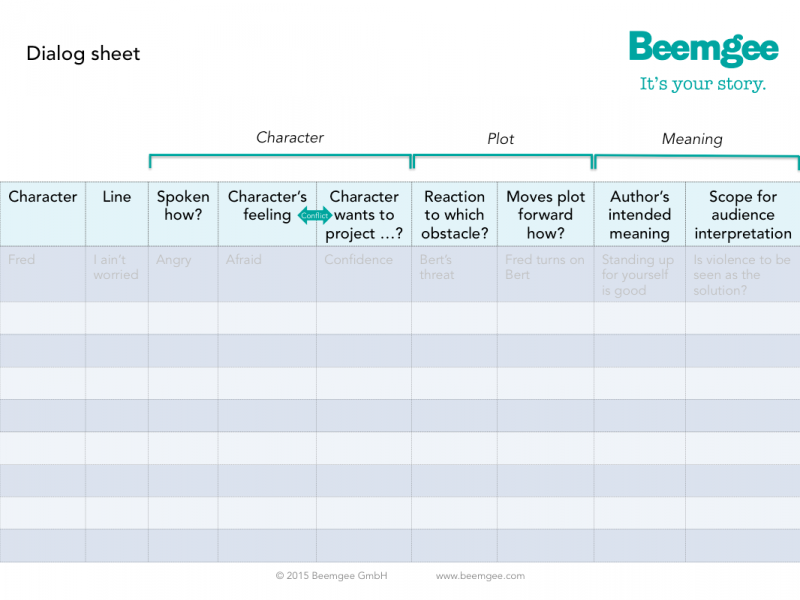The term motif refers to any recurring element – in storytelling as in music or other arts.
Examples of elements that turn up repeatedly within a whole are an image on a tapestry or a particular sequence of notes in a symphony. The dispersal of these elements creates a pattern. It is therefore part of the artist’s craft to have some sort of design principle determine this pattern.
What motifs do
Motifs do not make a plot. But since they make patterns they are part of the structure of a story. And they help add a layer of meaning.
In other words, if a motif is present excessively in the first half of a story, and hardly at all in the second, then the author had better be aware of a reason for this uneven distribution. The distribution – the pattern – carries meaning to the audience. Remember, the audience yearns for meaning, is always striving to understand what the story is trying to convey at any given point. This demand for some sort of raison d’être for each element of a story, or for a sense of order within the whole, may well be unconscious to the audience much of the time, but ultimately the experience of the story is more satisfying when the audience can work out reasons and meaning.
In stories, motifs can be almost anything. Objects, actions, metaphors, symbols, colours, or images can be motifs. What defines an element as a motif is the systematic deployment within the story rather than the thing itself.
How motifs work
Motifs work best when(more…)
Welcome to the Beemgee blog.
This blog is about storytelling. We examine how fiction works and what stories consists of, especially plot and character development. Many of the posts are inspired by functions and features of our outlining software. We believe there is a craft to creating stories. (more…)
Well, ideally, a story is as long as it needs to be, and no longer.
There are norms that have developed over time, and which are more or less inculcated into us due to our exposure to stories in their typical media. For example, a typical feature length film of roughly two hours has between forty and sixty scenes. Formatted according to industry standards, a screenplay has approximately as many pages as the finished movie would have minutes. In terms of plot events, some people in Hollywood believe that a commercial movie should have exactly forty (which in Beemgee’s plot outlining tool would mean exactly 40 event cards).
Content and form may be mutually determined, to some degree at least. A short story is usually considered such if it has less than 10.000 words. By dint of its length, a short story probably concentrates on one character’s dealing with one specific issue or occurrence, and is unlikely to have subplots or multiplots (that is, be about more than one protagonist).
(more…)
Dialog enlivens stories. But writing dialog well is really hard.
For a start, there is the rule of thumb that it’s better for the author to use action to explain things or move the plot forward than dialog. When the author makes characters say things solely to convey some bit of knowledge to the audience or reader, the lines tend to feel false.
Nonetheless, Elmore Leonard noted how readers don’t usually skip dialog. People like dialog. Dialog can be exciting. So authors had better not avoid it altogether either.
As an author, here are the seven things you ought to consider about every single line of dialog you put into your characters’ mouths. We’ve created this free table to help you. Feel free to download, use and share it.

1
If you’re writing(more…)
There is a craft to storytelling.
Much of that craft has to do with the structure of the story being told, the construction of its narrative. Many authors build this construction first, before filling the first page with text. The process of planning how the story works is known as outlining.
There are significant benefits to outlining. For one thing, going through this process usually entails fewer rewrites later. When the author knows the direction of the storyline, it is easier to keep all its threads under control while writing. Without this direction, there is a danger of losing the plot half way through.
Of course, any story is “told”. It therefore has language – text, if the medium the story is presented in is, say, a book. Film has language too. But apart from language, stories have structure. It is in building this structure that Beemgee can help. (more…)

